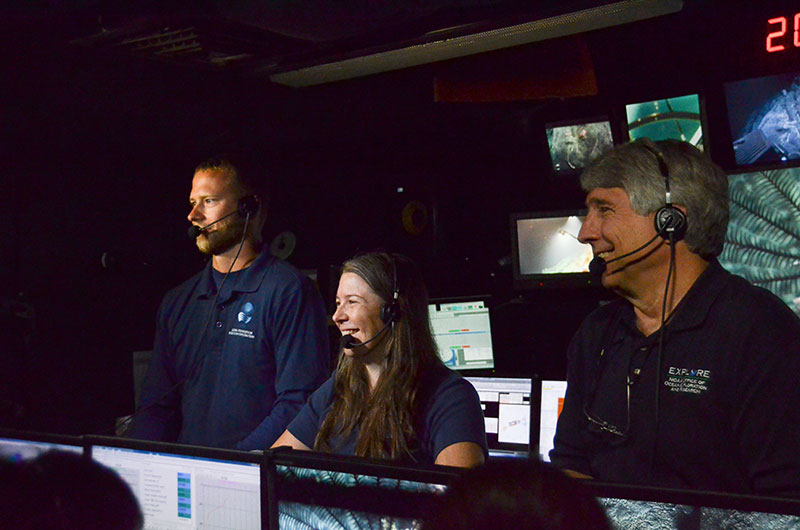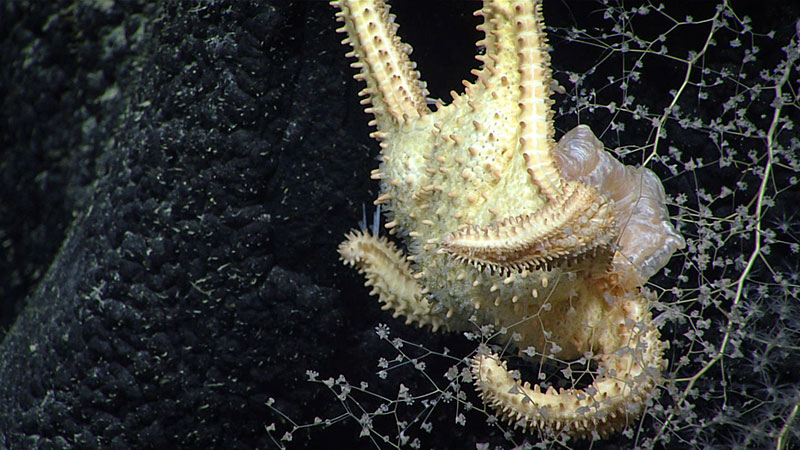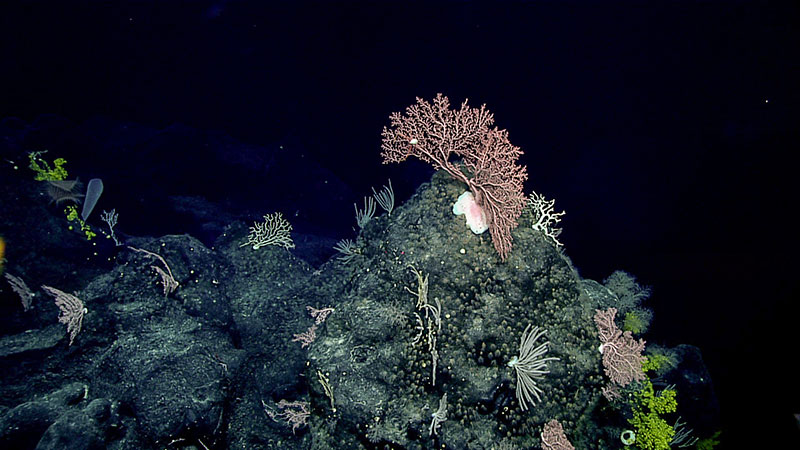-

Engaging and educating the public about the value of ocean exploration is a key part of the NOAA Office of Ocean Exploration and Research (OER) mission. During today’s dive, Global Foundation for Ocean Exploration Engineer, Chris Ritter (left), OER Expedition Manager, Kelley Elliott (middle), and CAPSTONE Science Advisor/Hawai'i Undersea Research Lab Program Biologist, Chris Kelley (right), conducted a live interaction with about 20 visitors at the Exploratorium in San Francisco, California. Image courtesy of the NOAA Office of Ocean Exploration and Research, 2017 Laulima O Ka Moana. Download larger version (jpg, 11.1 MB).
-

This large goniasterid Calliaster, a coral predator, was observed in feeding position – notice it has extended its cardiac stomach over its precious coral prey. Image courtesy of the NOAA Office of Ocean Exploration and Research, 2017 Laulima O Ka Moana. Download larger version (jpg, 1.2 MB).
-

We encountered a blocky pinnacle region composed of heavy manganese-crusted basalt blocks with a high density of colonial cnidarians, stalked sponges, and their associated faunas. This area was composed of steep walls, several valleys, and strikingly acute features where current flow seemed accelerated. The community had several large and very tall precious coral Hemicorallium species, some overgrown by yellow zoanthids. Other cnidarians included the chrysogorgiid Chrysogorgia sp, a white species of Paragorgia, stoloniferans, corallimorpharians, and several zoanthids proliferating over a wide rocky surface. Also observed were bright white glass sponges. Image courtesy of the NOAA Office of Ocean Exploration and Research, 2017 Laulima O Ka Moana. Download larger version (jpg, 1.3 MB).